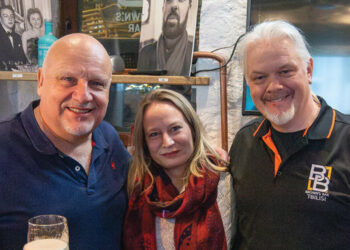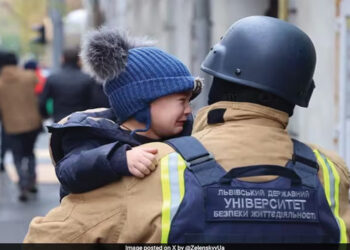In the small hall of the Rustaveli Theater, the air was heavy not with theatrical drama, but with something subtler, more ancient—an invocation. As the Patriarchal Chamber Choir of the Sameba Cathedral, under the direction of Svimon Jangulashvili, moved through a ‘Lamento’ program spanning the Renaissance to the contemporary, from the hallowed voices of Palestrina to the haunting landscapes of Giya Kancheli, the concert became more than a performance: it was an act of cultural and spiritual archeology, a sociological ritual, and an anthropological window into the enduring politics of the human voice.
Let us ask not what the audience heard, but what we witnessed: a reassembly of Europe’s sacred past, reimagined through Georgia’s unique choral identity. The program was a dialogue across centuries, languages, empires, and belief systems—a horizontal liturgy for a vertical age.
Polyphony as Politics: From Council of Trent to the Caucasus
Giovanni Pierluigi da Palestrina, often mythologized as the composer who “saved church music” during the Counter-Reformation, emphasized the evening’s metaphysical inquiry. In the wake of the Council of Trent (1545–1563), Catholic liturgical music faced existential threat: deemed too elaborate and theatrical, polyphony risked suppression. Palestrina’s crystalline vocal architecture offered a compromise—complex enough to elevate, clear enough to sanctify. In this Tbilisi performance, his music was more than Renaissance revivalism; it was a reenactment of how institutions negotiate between order and expression.
This struggle for spiritual intelligibility echoed in Tomás Luis de Victoria and Thomas Tallis, whose music stood on opposite sides of Europe’s Reformation divide. Victoria, the Spanish mystic, wove a Catholic interiority that contrasted with Tallis’s English pragmatism under Queen Elizabeth I—a Protestant composer who nevertheless maintained Catholic sympathies. Their inclusion in the program was not mere historic sampling; it was a cultural diagnosis: Europe’s sacred choral tradition is not monolithic, but fractal, shaped by schism as much as synthesis.

The Post-Baroque Echo Chamber: Monteverdi, Purcell, and the Rise of Individualism
If Renaissance polyphony embodies collective devotion, the Baroque introduced affect, ornament, and the soloist. Claudio Monteverdi’s madrigal-inflected spirituality and Henry Purcell’s Anglican subtlety shifted the emphasis from sacred transcendence to emotional immediacy. In the Rustaveli Theater, this sonic transformation unfolded with a philosophical edge—offering a historiography of how the sacred became theatrical, and how theology yielded to psychology.
This was the century when the Enlightenment loomed and the subject emerged as a central actor in the moral universe. In anthropology, this maps onto a broader evolution—from ritual society to theatrical society, from communal rites to aesthetic displays. When soprano Ana Palavandishvili soared above the ensemble, she wasn’t just singing a part of Dido; she was embodying a seismic civilizational shift: from choral collectivity to the individuated voice.

Modernity in the Minor Key: Kancheli and Whitacre as Spiritual Resistance
To leap from Purcell to Eric Whitacre is to traverse not just time but metaphysics. Whitacre’s postmodern choral works, infused with cluster chords, glacial pacing, and textural nuance, speak to our atomized, digital world. His pieces are often described as “ambient sacred,” a descriptor that resonates with what anthropologist Victor Turner might call communitas—a liminal, collective space where structure dissolves, if briefly, into shared intensity.
But if Whitacre’s modern sacredness is gentle, Giya Kancheli’s is defiantly apocalyptic. A Georgian composer shaped by suppression and exile, Kancheli never wrote explicitly religious music, but his oeuvre is drenched in spiritual longing. In the performance of his choral works at this concert, one could hear echoes of trauma, memory, and moral rupture. His dissonances are not musical accidents; they are ontological alarms.
It is in the works of Ioseb Kechakmadze and Zviad Bolkvadze that the concert found its most urgent cultural task. These Georgian composers do not merely imitate the Western sacred tradition; they respond to it.

The Choir’s Signature: Intonation, Clarity, and Discipline
What sets the Sameba Cathedral Chamber Choir apart is its approach to intonational purity and structural balance. The ensemble performs with an ear for inner architecture—each voice is placed in relationship not only to pitch, but to spatial and spiritual orientation. This precision is particularly evident in the choir’s interpretations of early polyphony (Palestrina, Tallis, Victoria), where blend and harmonic transparency are essential.
The singers work with remarkable vocal restraint, particularly in sacred repertoire. Instead of romanticized dynamics or operatic projection, they offer a clear, focused tone, often with minimal vibrato—allowing vertical harmonies to ring without interference. This technique evokes Georgian traditional singing, where the physical properties of the voice are secondary to harmonic clarity and communal unity.
In performance, the choir functions like a single organic structure—an aural dome in which each line supports the whole. Whether navigating the luminous suspensions of Whitacre or the modal swells of Kancheli, the Sameba ensemble listens inwardly, shaping their collective sound with architectural intent. With soloists like Zviad Michilashvili, Tornike Papidze, and Irakli Tkvatsiria stepping in and out of the collective fabric, the evening constantly negotiated between the communal and the personal, the ecclesial and the secular, the old and the unfolding.

Svimon Jangulashvili: The Silent Architect
Artistic Director and conductor Svimon Jangulashvili is not a flamboyant figure on the podium. His gestures are minimal, almost ascetic, but carry extraordinary clarity. He does not sculpt the sound from the outside; rather, he appears to unlock it from within the ensemble.
Jangulashvili’s background—deeply embedded in the ecclesiastical tradition, yet informed by Western choral scholarship—makes him uniquely suited to a repertoire that spans both Orthodox chant and European sacred polyphony. He is known among colleagues for his precise ear, his exacting rehearsal standards, and his insistence on musical integrity over surface affect.
Under his leadership, the choir has developed an approach that prioritizes listening over projecting, structure over emotion, and intentional silence over embellishment. His programming choices—such as combining Whitacre with Monteverdi, or Bolkvadze with Victoria—are never random juxtapositions, but crafted dialogues between spiritual epochs.
What Does It Mean to Lament Together Today?
In an age of political turmoil, algorithmic individualism and cultural fragmentation, to sing together—especially sacred music from diverse times and geographies—is a radical act. The concert at the Rustaveli Theater was not merely a celebration of musical beauty; it was a statement: that in a world of noise, harmony still matters. That in a world of borders, polyphony transcends.
In Palestrina, we heard the birth of sonic clarity amid dogma. In Whitacre, the weightless yearning of the digital soul. In Kancheli and the Georgian composers, the choral tradition becomes a vessel not of answers, but of questions.
And maybe that is what choral music, at its best, does: it stages the eternal conversation between heaven and earth—not as resolution, but as resonance.
By Ivan Nechaev














